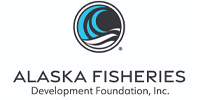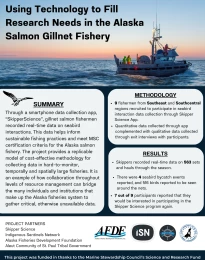Summary
An Ecological Risk Assessment (ERA) consisting of a qualitative Scale, Intensity, Consequence Analysis (SICA) and a semi quantitative Productivity-Susceptibility Analysis (PSA) was used to determine relative risk to Marbled murrelets and Kittlitz’s murrelets from the Alaska salmon gillnet fishery. The ERA framework is hierarchical and used to understand relative risk in data-limited fisheries. Despite relatively little information about murrelet-bycatch, it was possible to rule out major risks in many regions of the state based on relatively low fishing effort, low murrelet density, or both.
The analysis was conducted considering the following Operational Objective: There must be a reasonable level of confidence that if the birds are depressed, the fishery would not prevent them from recovering given favorable environmental conditions. It is important to identify an objective(s) that is logical to stakeholders and quantifiable. In this case, the Operational Objective comes from the MSC Assessment standards.
The ERA evaluates the source of the risk, the potential consequences of the risk and the likelihood of those consequences occurring. Consequences and likelihood are assessed against specific criteria such as life history characteristics and the likelihood of, in this case, murrelets encountering salmon gillnets. Consequence and likelihood are then combined to produce an estimated level of risk (low, medium, or high) associated with the potential hazard.
Of the 13 Commercial Salmon Management Areas in Alaska, all of which were evaluated for relative risk to murrelets from interactions with the salmon gillnet fishery, 11 were ruled out as low risk during the scoping process or the SICA. Two Management Areas were moved forward from the SICA to the PSA and assigned a risk level of “low” at the end of the analysis. Based on these findings, the authors of this report believe that the Operational Objective is met by the status quo of gillnet-murrelet interactions in the Alaska gillnet salmon fishery. However, the authors also recognize that due to the data-limited nature of this issue, continuing to collect data on interactions and murrelet population distribution when possible will be beneficial to both the industry and bird conservation efforts. Therefore, the authors are currently working with seabird researchers and software developers of the data collection application, SkipperScience, to fund data collection from gillnet fishermen regarding seabird distribution and interactions with the fishery.



